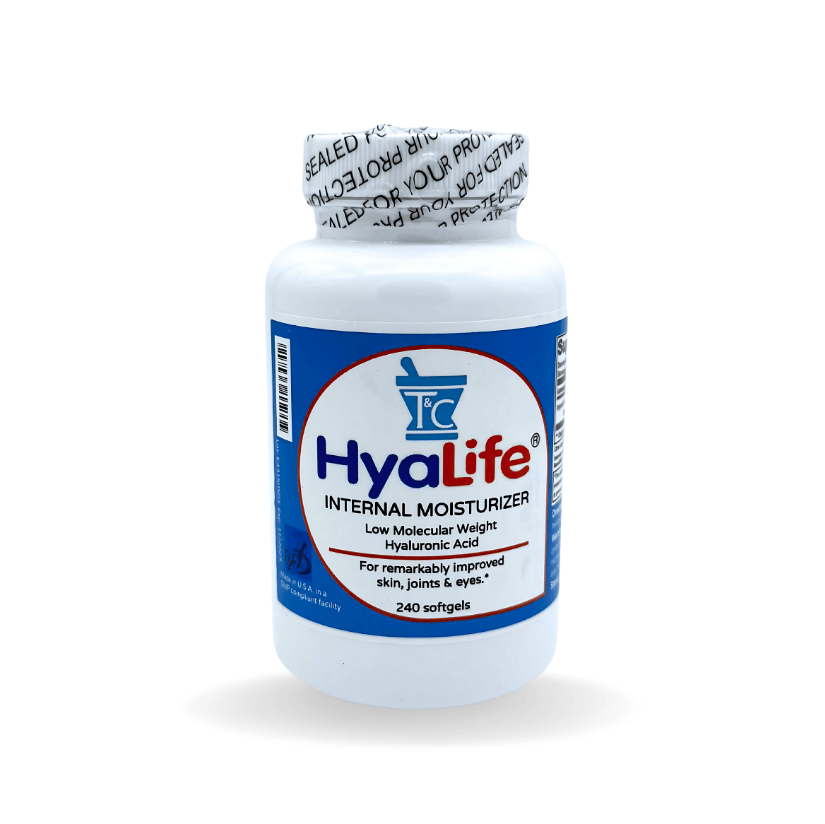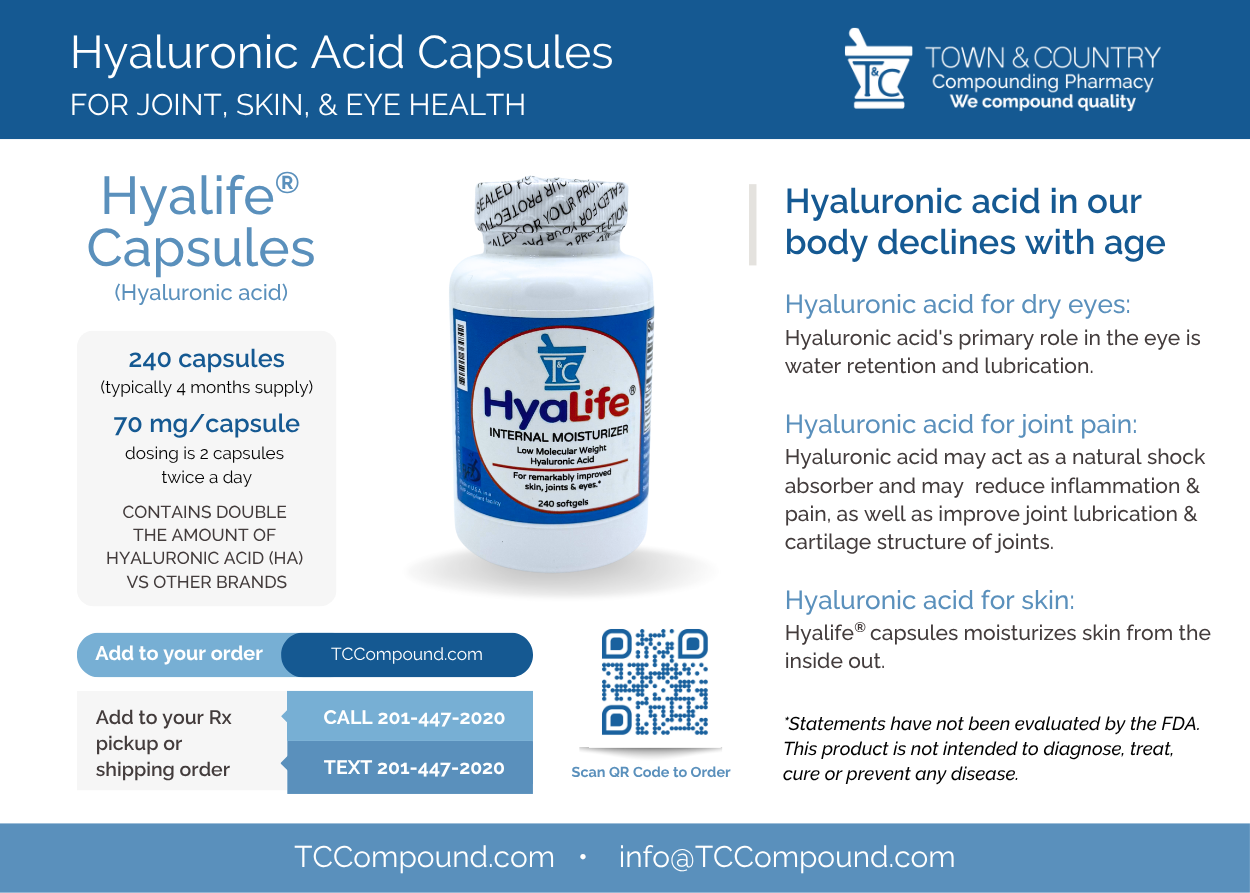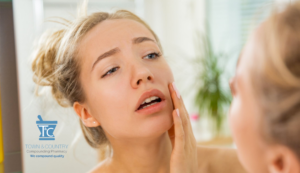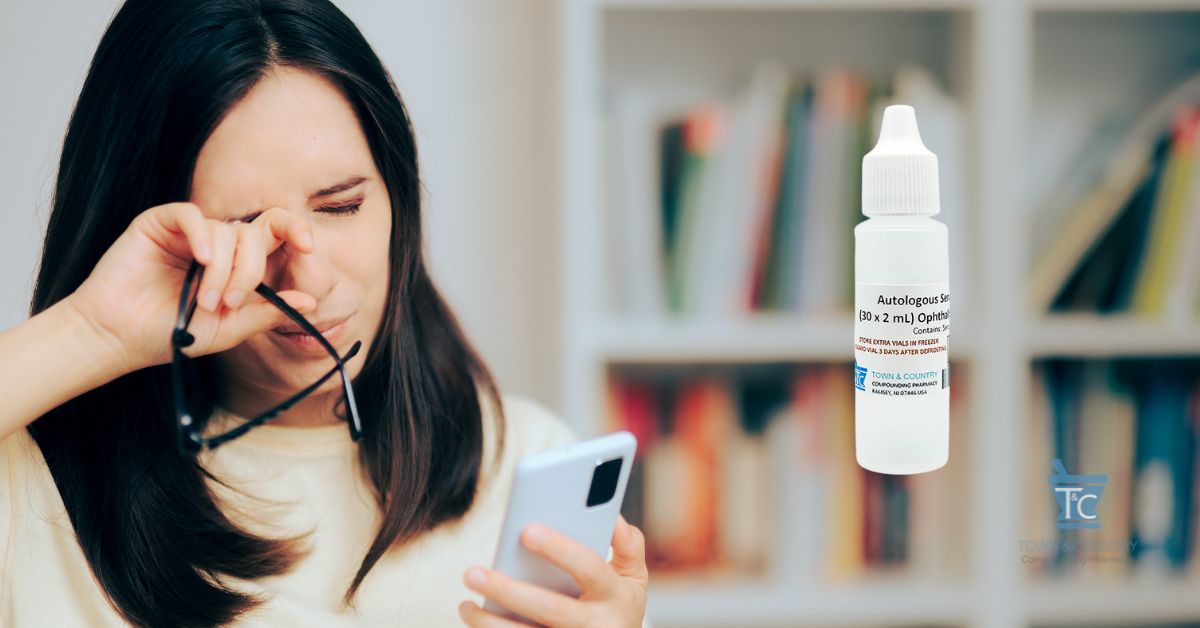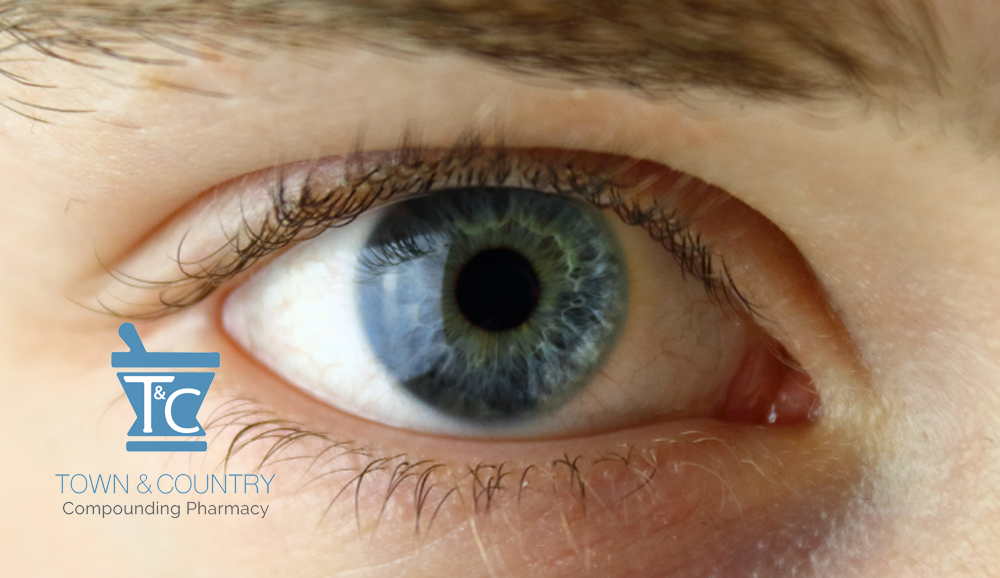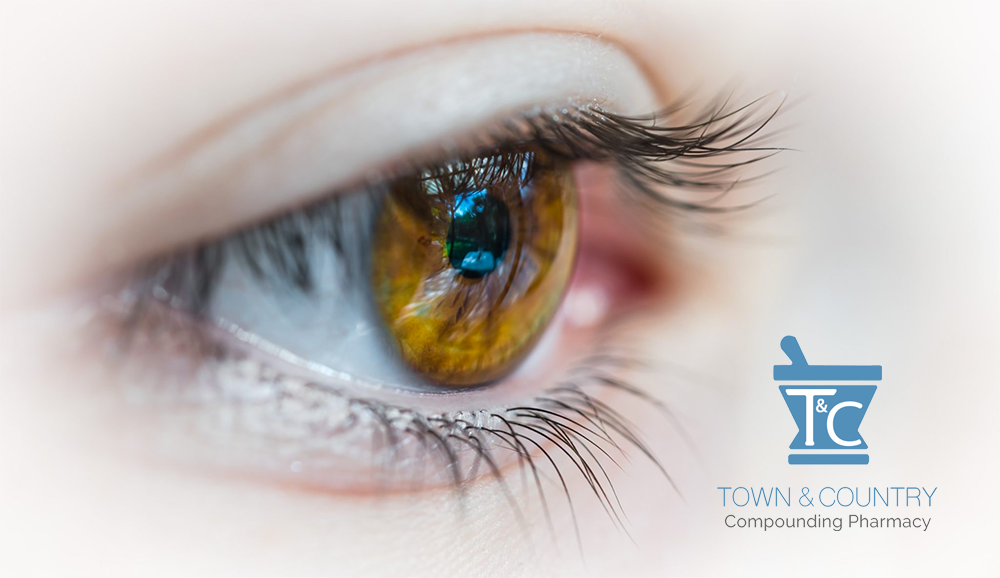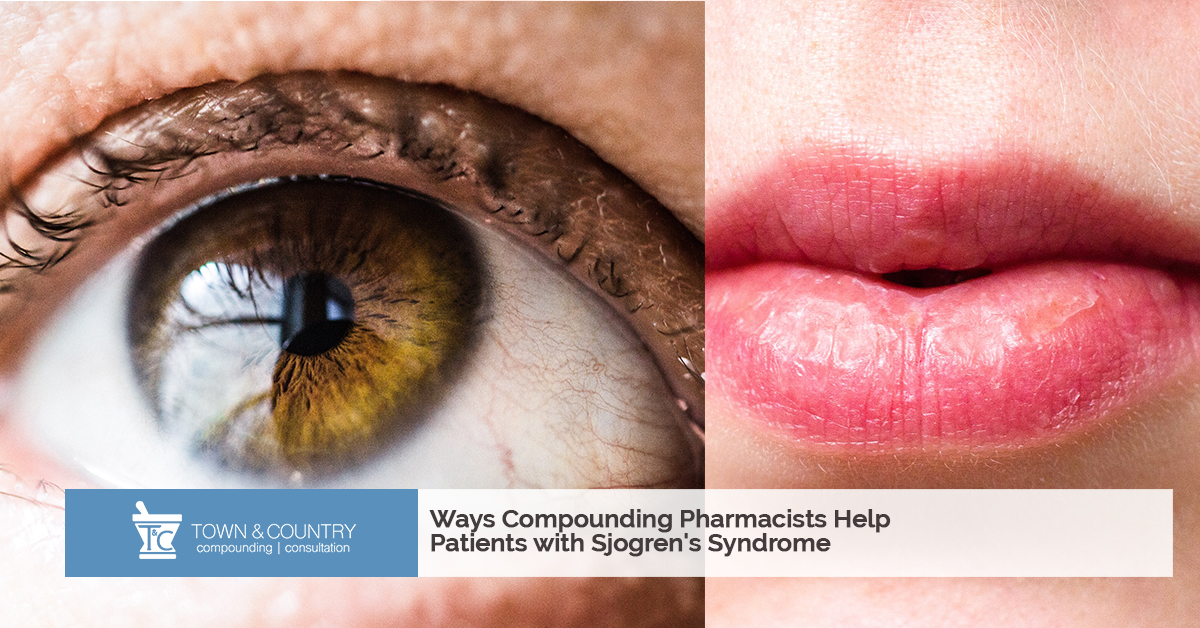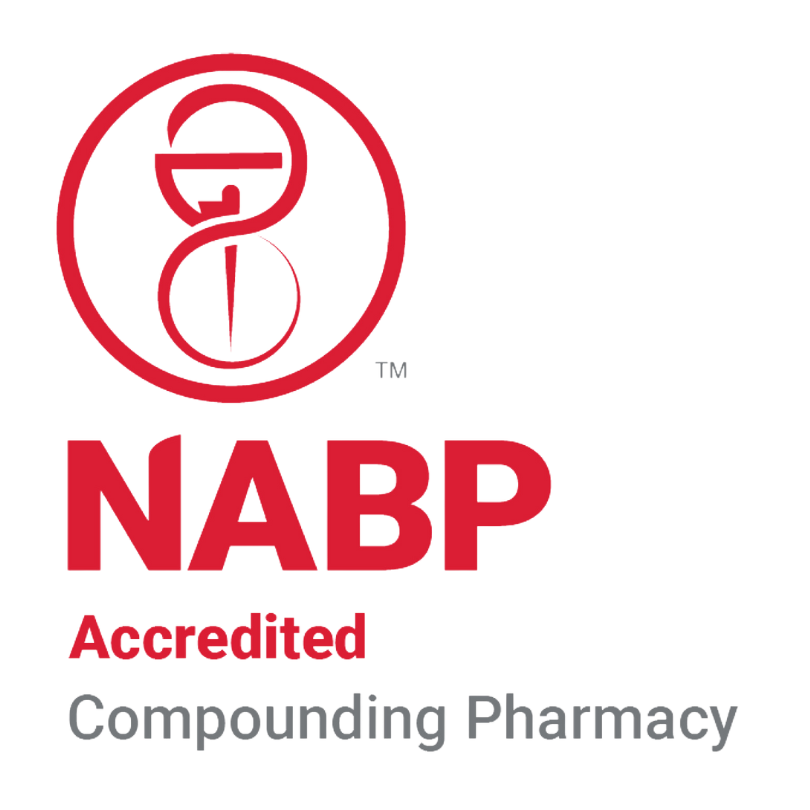
Dry Eyes in Aging, Menopause, and Hyaluronic Acid: Moisturizing from the Inside Out
Dry eyes often become more noticeable or problematic with aging, menopause or with autoimmune conditions. Dry eye syndrome (DES) or dry eye disease (DED) is a common disorder of the eye that can be related to age, gender, diet, environment, disease, and surgery. It can also occur due to medications the patient is taking.
Other Causes of Dry Eyes
Medications such as antidepressants, diuretics, and drugs used for Parkinson’s disease and rheumatoid arthritis can exacerbate dry eyes. Patients with autoimmune disease may also experience issues with dry eyes due to inflammatory issues.
Dry Eyes in Women
One of the main causes of dry eyes in women is hormonal changes due to perimenopause and menopause. According to the Optometrists Network, over 60% of women in this stage of life are affected by it. There are estrogen and testosterone receptors on both the cornea and on the gland in the eye responsible for the production of oils and fats.
Hormone replacement could be considered for women; some patients who used topical testosterone reported an improvement in pain or eye soreness that developed with dry eyes.
Meibomian oil glands line the edge of the eyelids, near the eyelashes and secrete the oil that coats the eyes and tear film. They prevent the tears from evaporating too quickly. The risk of developing dysfunction in this gland increases with age, especially in those over 40 and for those who wear eye makeup.
Patients who start to experience symptoms of dry eyes may first try to get relief with over-the-counter (OTC) drops such as artificial tears or lubricants, but results are often inadequate. The dryness may be irritating but not yet bad enough to see the doctor for prescription medications.
Role of Hyaluronic Acid (HA) in Dry Eyes
Hyaluronic acid naturally occurs in the skin, eyes, and joints. Its primary role is to retain water inside tissues, so as to maintain moisture in the eyes and keep joints lubricated. Because of its safety profile and water retention properties, it has many applications in the field of ophthalmology, such as in intravitreal injections, dry eyes, and even in contact lenses. Learn More >>
The vitreous is a colorless fluid between the lens and the retina that protects the eye and helps it hold its spherical shape. Over time, the vitreous humour shrinks and liquifies, similar to how a bowl of gelatin may liquify over time.
The Beginnings of Hyaluronic Acid
The discovery of HA originated from research exploring eye structure. The viscous gel-like fluid in the eye, the vitreous humor, was found to have a concentrated level of HA serving to cushion the structure of the eye and help with the transport of nutrients.
The first medical application of HA in humans was as a vitreous replacement during eye surgery. Because of its function of lubrication and water retention, it is used in many eye drop preparations. In multiple clinical case studies in ophthalmology patients with dry eyes, who were given oral supplements containing HA, most reported improvements in moisture.
The clinicians who conducted the studies noticed an increase in tear break up time (TBUT; a test to assess dry eyes), decreases in corneal staining, and a decrease in pain, suggesting improvement of common symptoms of dry eyes with oral use.
*These statements have not been evaluated by the FDA. This product is not intended to diagnose, treat, cure or prevent any disease.
Hyaluronic Acid Today
HA has been used in various forms to help improve the symptoms of dry eye disease (DED), visual function in patients with dry eyes, and also in post-surgical patients.
HA naturally occurs in the body in connective tissue, synovial fluid, and in the aqueous humor and vitreous of the eye. HA has three primary characteristics that make it useful in ophthalmology:
- Absorbs and holds 1000× its weight in water. It retains water and prevents moisture loss in the places where it is present.
- Stabilizes tear film.
- Aids in wound healing. It can help with epithelial cell proliferation, migration, and healing. Studies show HA’s ability to increase healing of corneal abrasions in rabbits.
Hyalife® Capsules
Hyalife2® features a patented form of easily absorbed low molecular weight hyaluronic acid (HA) formulated to promote retention of moisture in the matrix of extracellular tissues where HA naturally occurs. Particularly in the skin, joints, and eyes.
Why choose the Hyalife® Brand of oral hyaluronic acid?
Typical HA is a large molecule, making it problematic for absorption when consumed orally. Hyalife® uses HA that is naturally derived from rooster combs and goes through a patented process with enzymes to yield a smaller compound with enhanced absorption capability.
Refer to our Blog for more information:
Stay tuned for our articles on Hyaluronic Acid and its effects on Dry Skin


